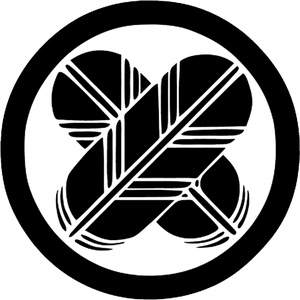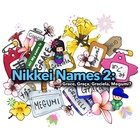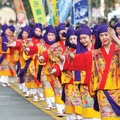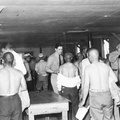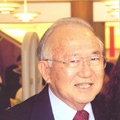My name is Yukio Kawaratani. I am a Nisei born on May 30, 1931.
Kawaratani is a very rare Japanese name in the United States and even so in Japan. Our family crest, or mon,is of two hawk feathers crossed in a circle. It was the family mon of Lord Asano of 47 Ronin fame. He was the noted Japanese warlord forced to commit hara-kiri for attacking another lord, who was insulting him.
Ronin are samurai warriors who have lost their master. The 47 Ronin are famous heroes in Japanese history. They conspired to avenge Lord Asano’s death. After they succeeded, they all were arrested and ordered to commit hara-kiri. With the same Asano family mon, I have wondered if that may be why the Kawaratani name is rare in Japan.
The Kawaratani name in Japanese is not spelled as river or kawa (川) in kanji. It is kawara (瓦) or rooftile and tani (谷) is valley. Rooftile valley is an unusual and rare name.
Yukio is a very common Japanese first name. It is not yuki (雪) or snow. In Japanese kanji, it is spelled saiwai otoko (幸男) or fortunate male. I have been fortunate to be the youngest of six sons in a large family of nine children, so I was the baby of the family with no responsibilities or cares.
Caucasians like to call me Yuki for short. I never liked to be called Yuki because it is usually referred to as a girls’ name. I was usually called “Uke” by family and friends. However, the short spelling I used of “Yuk” became a problem, when a vocal co-worker started calling me “Yuck, Yuck.” Therefore, I have always spelled and said that my name is Yukio, with an emphasis on the letter “o.”
Some other issues regarding my name: During World War II, part of my large family was incarcerated in the Tule Lake concentration camp. Rumors constantly stated that we could be subject to prisoner exchanges and would all be deported to Japan after the war. My father decided we needed to learn Japanese, so he took us out of the English language school and I was put in the Japanese language school for 2 years. In my early teens, I was indoctrinated on Japanese history, culture, social mores and the Samurai Bushido code of conduct that emphasized honor, duty and loyalty. Most importantly, I learned to be proud to be Japanese.
After the war, we moved to the City of Santa Ana. In the first day in school, the teacher took me aside and said I should take on an English name to be better accepted by other students. She named me George after our first president, like many other Nisei guys were. A month later we moved to the city of Long Beach, where I made a lifetime decision. My real name is Yukio and I am proud to be Japanese, so that is what I want to be called. Unlike many other Nisei, I never used George or any other English name again.
When I became a city planner working on the redevelopment of downtown Los Angeles, I had to make many business phone calls. Back then, nearly all professional offices had secretaries answer the telephone first. They often asked me to spell out my long last name. I then resorted to tell them my name was just Yukio. An architect I called laughed and said the secretary said a Mr. Yukio was calling.
Whenever I met a new business acquaintance, I gave them my full name, but I always said to just call me Yukio. They were pleased, as my last name was difficult for them to say and to remember. Throughout my career, all my contacts with high or low level status came to know me as Yukio.
A Japanese developer told me that he was puzzled that all the professional people were referring to and calling me Yukio. He said that in Japan, only children were called by their first name. I told him that it was an advantage in America to be communicating on a first name basis. Instead of formally being called Mr. Kawaratani, my using only Yukio creates a more informal, casual interaction, and I can call even high-level persons by their first names, because they are using my first name.
That is why the title of this article is: MY NAME IS YUKIO.
© 2024 Yukio Kawaratani
Nima-kai Favorites
Each article submitted to this Nikkei Chronicles special series was eligible for selection as the community favorite. Thank you to everyone who voted!


